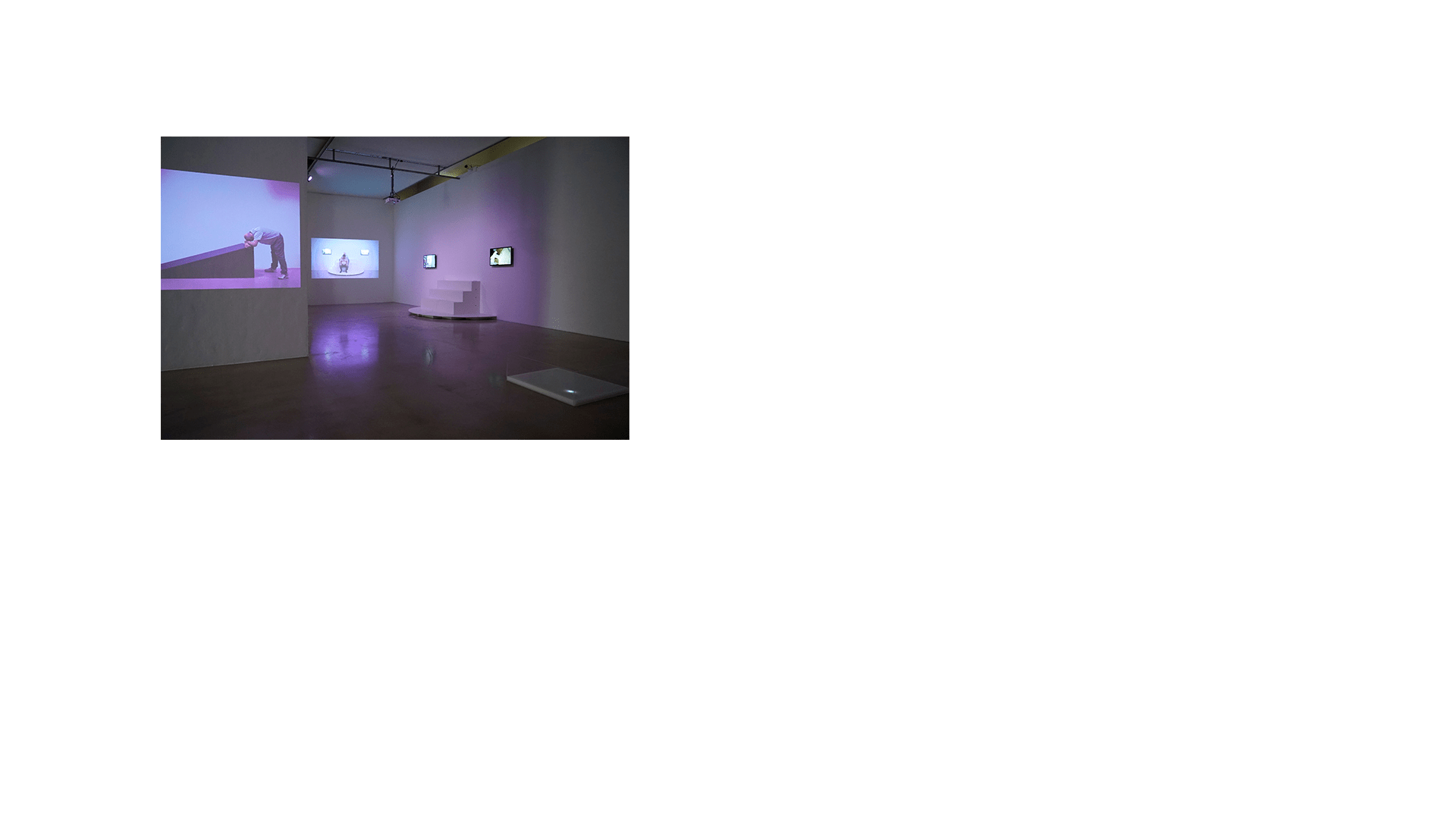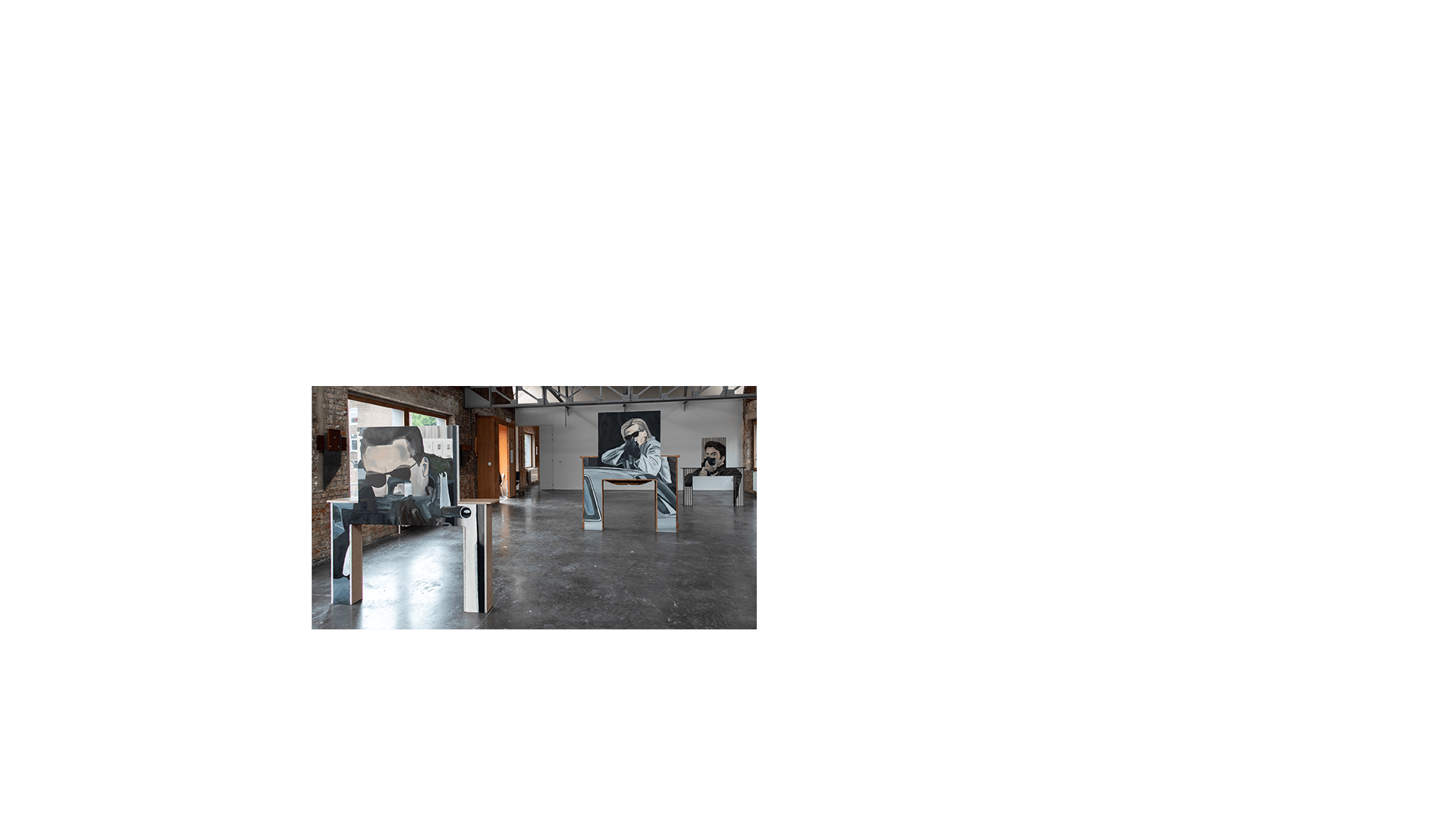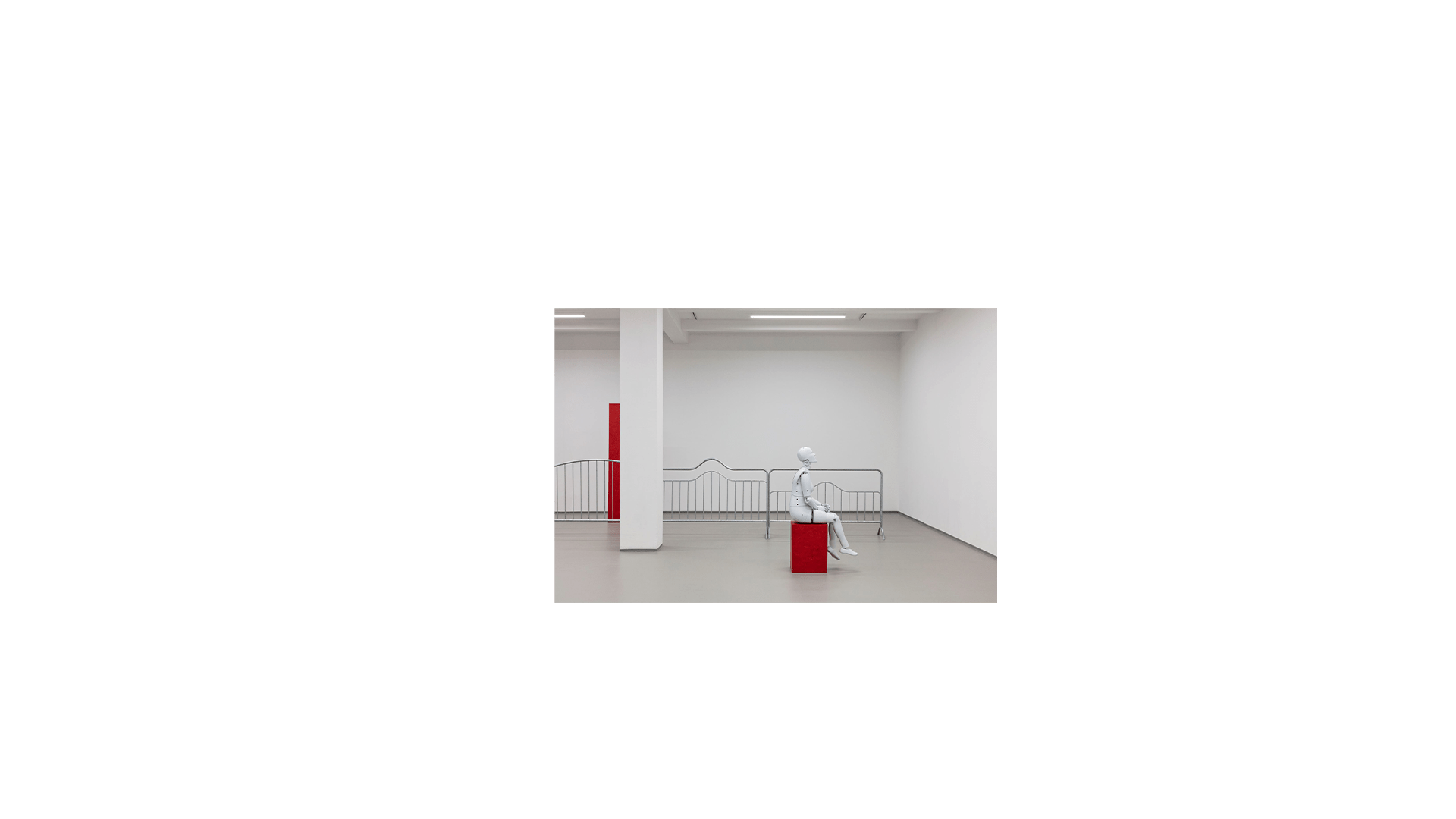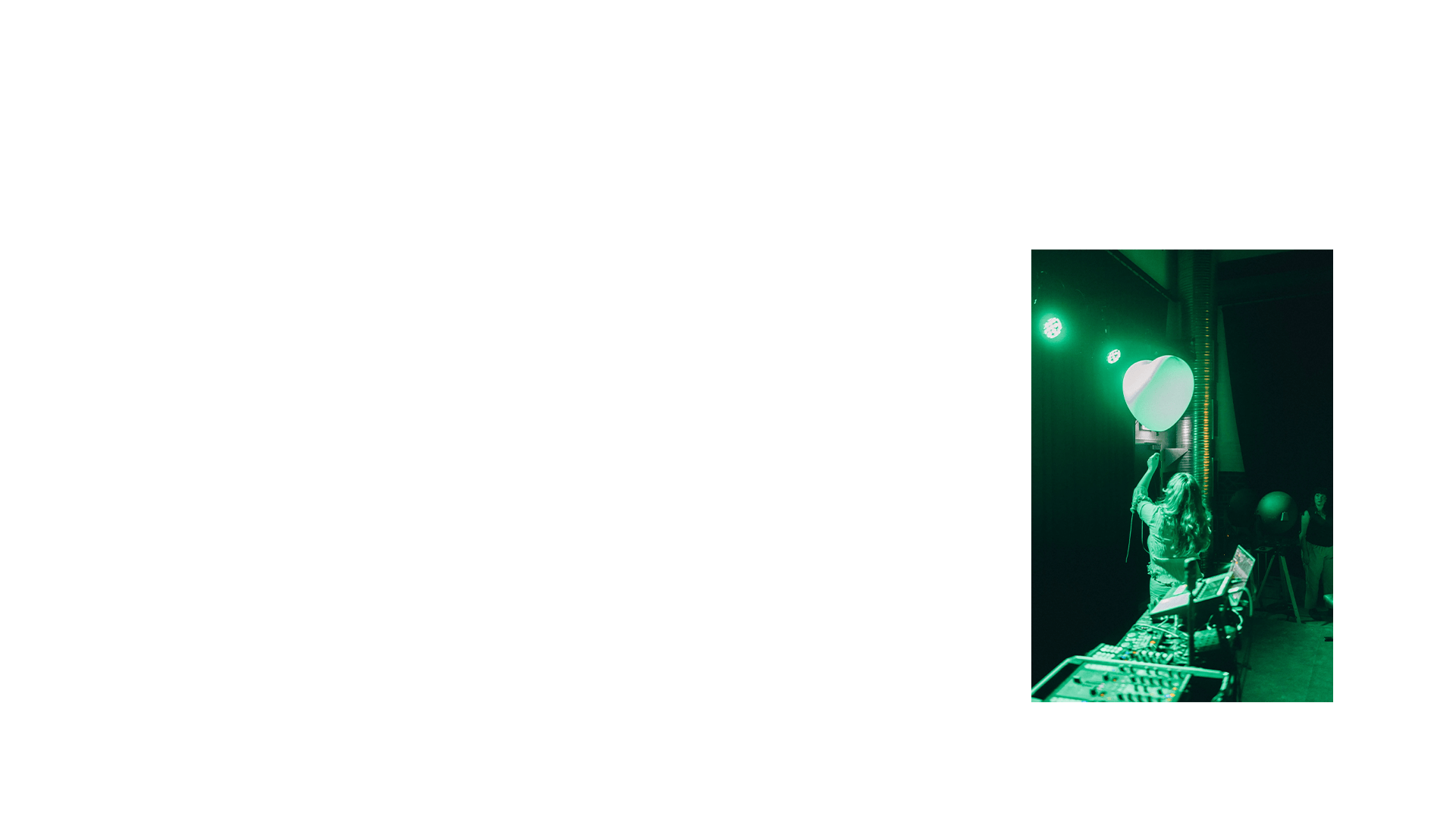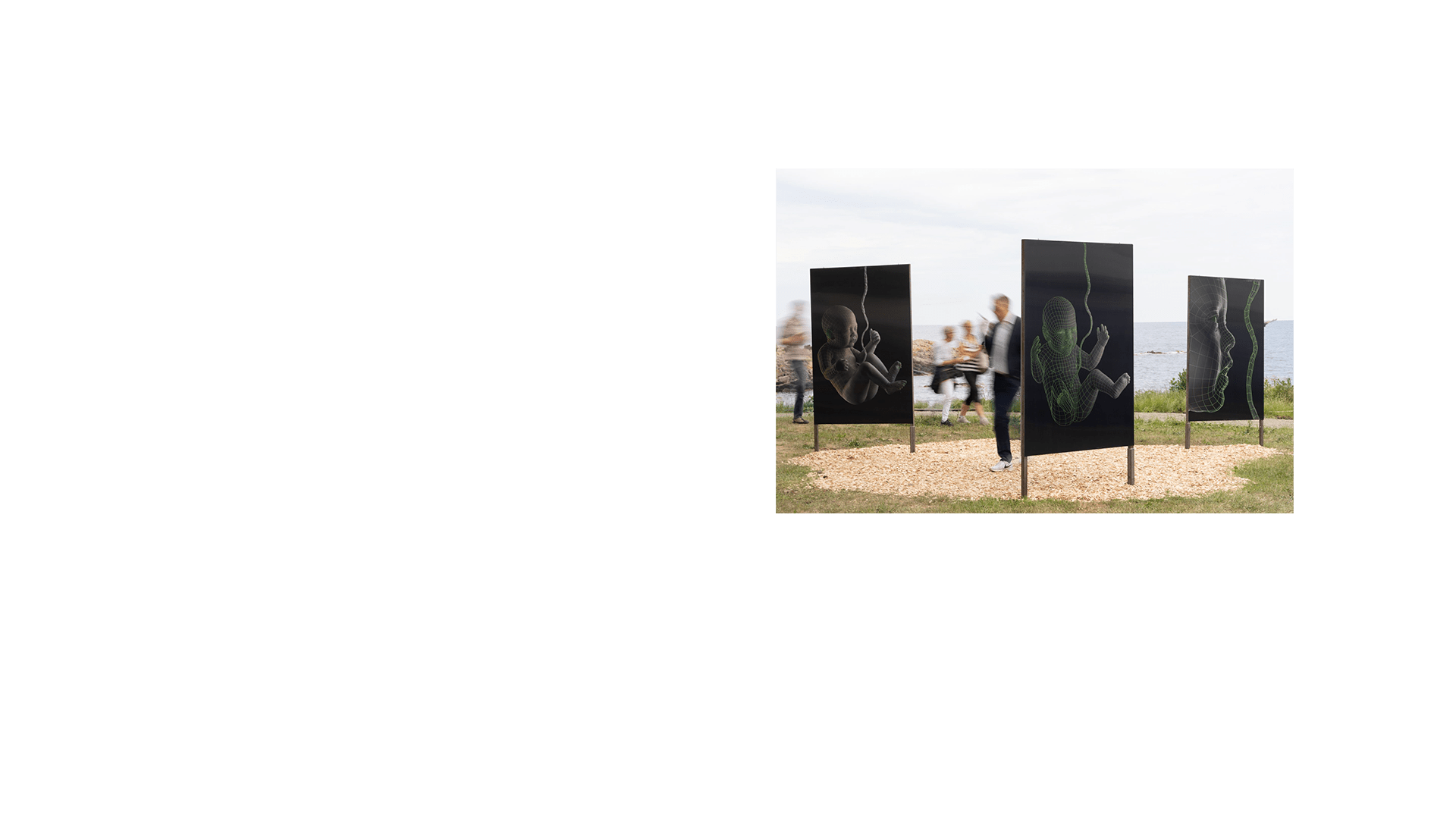Film portrait of the artist Lina Hashim
Date:
Born to Iraqi parents, Lina Hashim came to Denmark as a refugee in 1992. She has sought to balance being a woman with Middle Eastern roots and life in a Western culture since then – and, eventually, found a way to do it as an artist. In her work, personal and performative, she uncompromisingly explores and challenges her own experiences and the fastened notions of others.

Lina Hashim. Photo: Luna Stage
“A decent woman. A whore. A fragmented subject who has been as far down as anyone can be. A totally sexualised being.”
These words come from Lina Hashim’s introduction to her work The Touch. They speak of a woman who finds herself categorised – not by herself, but by others. By the external gaze; by expectations; by stereotypes in art.
The Touch, an interdisciplinary work that established Lina Hashim on the Danish art scene in 2020, swept audiences off their feet. Through a combination of performance lecture, dance and installation, Hashim unfolded the story of the grisly spiritual rituals she underwent to lift a curse, something sinful and forbidden in Islam, while in a shelter and, later, through the process of separation ending a toxic relationship.
A harrowing story, both exposing the contradictions between the religion of Islam and Western secular society and raising universal and eternal questions about reason and feeling, spiritual magic, conventions, and norms.
Islam backstage
Recurring through Lina Hashim’s work is the theme of the investigation and the uncovering of the contemporary practice and implementation of Islam as religion – especially those aspects hidden from public view. Based on her own Muslim upbringing and schooling, she seeks to examine the misrepresentation of otherness she experiences through a critical and nuanced (rather than intentionally blasphemous) dialogue with the religion.
“If Islam is a theatre play,” Hashim has stated in an article for the online media Zetland, “I want to show what happens backstage”. She achieves this with a distinctive, interdisciplinary, artistic practice that incorporates anthropological methodology, in-depth research and reading, performance, installation, calligraphy and (not least) photography.
In her investigations, Hashim works with a dual perspective on Islam, partly as a woman raised as a Muslim and partly as a critical observer. We see this in the work No Wind from 2012, for example, in which Hashim persuaded a number of Muslim women to remove their headscarves for her camera, allowing their hair, which so seldom sees sunlight or feels the movement of the wind, to be photographed, without the women’s identities being revealed.
Lina Hashim vividly remembers what it was like to grow up to a background of endless pop songs about a love that she wasn’t allowed to practice. This is why (among other reasons) she used covert methods to create a series of voyeuristic photographic documentary portraits of the secret trysts of young Danish Muslims in 2014. In the series Unlawful Meetings, Hashim played private investigator to capture both the clash between Western and Middle Eastern culture and the split identity experienced so particularly by Muslim girls, required to live up to dictates of chastity in a way that boys do not.
The liberation of women with a Muslim cultural background
The figures of the girl and the woman are central to Lina Hashim’s work. Deriving material from her own life, she advances a persistent feminist critique of the prevailing notions and expectations of Muslim women. Over the years, this critical gaze has expanded to include Western prejudices and, most recently, the art world’s alienation of women with a Muslim cultural background.
Is there an inexplicit expectation that female artists with Muslim heritage are obliged to create work with an explicitly exotic, anti-patriarchal, even anti-religious, theme? This is a question that Lina Hashim has come to suspect in her work with Danish art institutions – and a question she’s currently investigating further.
In her latest work, Who Am I?, performed at Kunsthal Nikolaj in 2023, Hashim used performance and dance as a form of purgation. Wearing heavy gold chain jewellery, she danced in front of kaleidoscopic mirror mosaics in a kind of exorcism of the stereotypes of women with a Muslim cultural background:
“It was a completely obvious choice to me, using performance and the mirror, because I’ve always mirrored myself. In the same way the mirrors were placed in these Islamic patterns, I was trapped in a pattern. That pattern was my name, my colour, my childhood, the way I think. And with the performance, I give up the exhaustion I felt about being a sexual object or a stereotypical object, oppressed and needing to be released from captivity. There are so many ideas of what a Muslim woman is and should be, and with that dance and that performance I tried to pull all that out of my body and serve it to the audience so they could take it from me.”
MORE ABOUT LINA HASHIM
Lina Hashim is an artist, performer, and a critic at the online media I Do Art. Born in Kuwait City in 1978, she lives and works in Copenhagen. Hashim graduated from the Royal Danish Academy of Fine Arts in Copenhagen in 2020 and has exhibited at Kunsthal Charlottenborg in Copenhagen and the Norton Museum of Art in West Palm Beach, Florida. She is a recipient of the 15. Juni Fonden’s Honorary Award and has been nominated for international awards such as the Rudin Prize and the Foam Paul Huf Award.
On winning the 15. Juni Fonden’s Honorary Award for her work The Touch, the art critic and Fonden committee member Mai Misfeldt explained the committee’s justification:
“Lina Hashim has a background in anthropology, from the photography school Fatamorgana and the Royal Danish Academy of Fine Arts. With her Danish-Iraqi background, an early Muslim education and a foot in two cultures, she draws on experiences from all these fields in her artistic practice. In her performance, the artist can appear doubtful, searching, and honest. The marvellous thing is that she is, without doubt, all three, an uncompromising artist of great control and bravery”.
In 2023, she was selected for AHC’s programme Artistic Practice, which includes a live event where the artist meets an international figure of their choice. In November 2023, Hashim met Ruba Katrib, the curator of MoMA PS1, for a conversation on her practice as part of the Performa Biennial in New York.
On the 22nd and 23rd of February 2024, Lina Hashim will perform a brand-new work at the Toaster Festival in Copenhagen. Read more here.
MORE ON ARTISTIC PRACTICE
Artistic Practice is an outreach programme for established artists in Denmark who have both made their mark in a ground-breaking and innovative way and who, while mostly exhibited in Denmark, are considered to have international potential. The programme is centred on a video portrait and an interview with an international curator who focuses on the individual artist’s practice, aiming both to communicate it and to offer support with a view to building an international network.
As the artists are selected by a jury, it is not possible to apply for admission to the programme. Artistic Practice is organised in collaboration with editor and project manager Karina Lykkesborg.
The programme was initiated by the Bikuben Foundation, which ran the programme from 2019 to 2022. Artistic Practice continues to be supported by the Bikuben Foundation.
All the earlier films are available here.
Read more about the programme and the current artists in Artistic Practice here.



